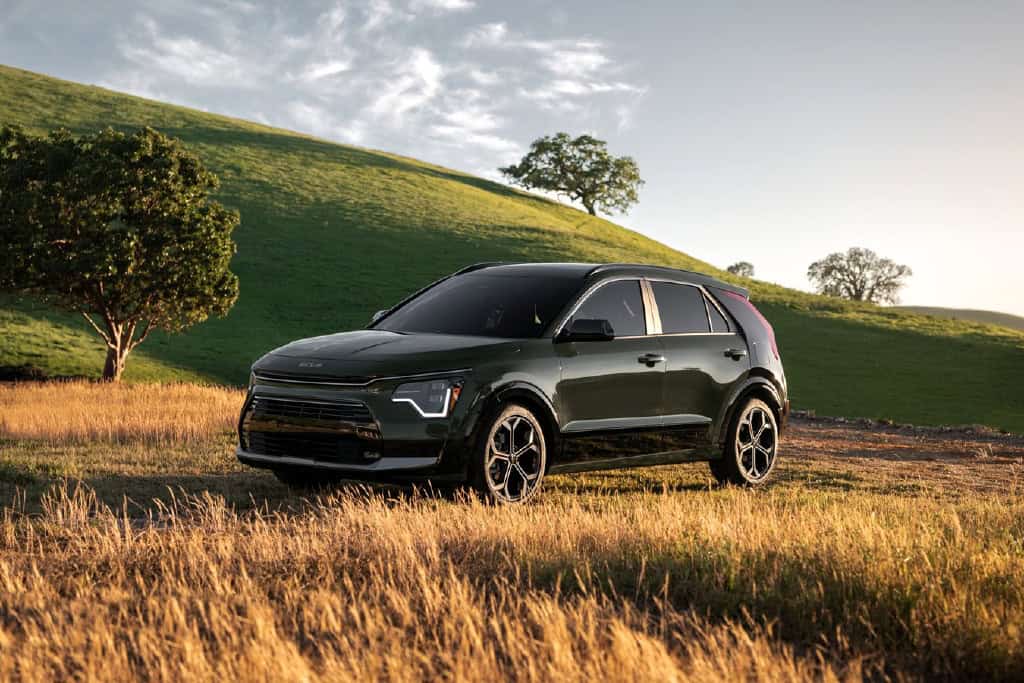By Peter Perrotta
The 2023 Kia Niro PHEV (plug-in hybrid) is akin to a Swiss Army knife.
It has many different tools to offer in this ever-changing landscape of new hybrid and electric vehicle (EV) models that are becoming more the norm.
The PHEV trim of the Niro model offers a fuel efficient and compact 1.6-liter, four-cylinder engine combined with a 62-watt electric motor that is charged with a lithium battery.
The battery is chargeable through a plug-in hook up.
Thus, this innovative offering from this South Korean auto manufacturer can be powered three different ways: using strictly gas; as a hybrid that alternates between gas and electric when need be; and strictly as an EV only.
Kia offers the newly redesigned Niro in three different versions as well: hybrid; plug-in hybrid and EV.
I recently jumped behind the wheel of the Niro PHEV for one week to see what this new and improved version of this vehicle had to offer.
The first thing you notice is its bold new high tech look for 2023. It features a sculpted front bumper and deep sculpted side panels giving it a more high tech, futuristic look while keeping its rugged appeal intact.
That sculpted more futuristic motif is carried over to the inside as well. Kia has used recycled materials and natural fibers such as eucalyptus leaves for the headliner and upholstery.
I found the two-row, five passenger crossover to be quite comfortable inside and there was ample cargo space behind the second row to haul a moderate to large size amount of cargo.
The sight lines and leg and head room are more than adequate.
The PHEV model I drove puts out about 180 horsepower which combined with the gas and electric motor. The hybrid only version puts out a more modest 139 horsepower.
I found the acceleration on the PHEV version I drove to be more than adequate. It has a smooth takeoff and enough power to get you into the passing lanes comfortably.
I found the handling on the Niro to be quite good. It maneuvers fairly tightly through the turns and has a smooth feel to it even over some bumpy terrain.
There are about seven different trim levels of the Niro, so choosing which one suits your needs the best could be a bit tricky.
The base model LX starts at $27,785. The mid-level SX has a base sticker price of $33,785 and the top-of-the-line SX PHEV – which is what I drove – carries a base sticker price of $40,785.
According to the EPA (Environmental Protection Agency), fuel consumption ratings on the PHEV model I tested is quite economical. It gets an EPA rated 48 miles per gallon (mpg) overall.
The EPA also estimates that it would cost the average driver a meager $750 per year in fuel to keep this model running. That, my friends, is darn good.
The Niro was outfitted with an updated 10.25-inch infotainment screen that offered voice guided navigation. The Kia touch screen system is fairly easy to use.
However, I did experience some frustration with the voice command system. It occasionally did not easily pick up my voice commands.
This Niro model has not been “crash test rated” by the National Highway Traffic Safety Administration at the time of this writing.
Peter Perrotta’s On The Road column appears every other week. He can be contacted at [email protected].
On The Road is sponsored by Capital Motor Cars of Springfield NJ – one of the leading new car leasing agents in the Tri-State area.

